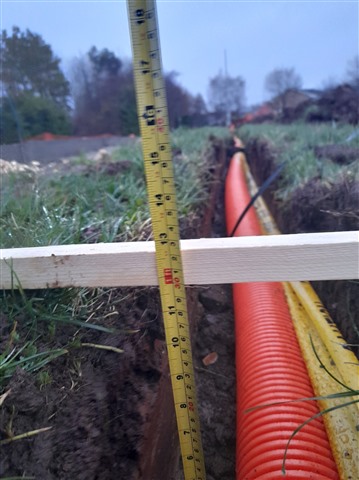Good afternoon,
I have an ongoing conflict with my local council over the depth of cabling.
A new footpath has been laid with street lighting, over a soft green open space. When the cabling was being laid, I took measurements of the depth of trench and this varied from about 250mm to about 450mm. Having looked at many documents, I have read that the covering depth of the cabling should be 450mm, with 75mm of sand below the cabling, 75mm above the cabling then the yellow/orange marking tape 250mm above the top layer of sand. This would then be back filled to surface level. The councils own 'Design & Specifications' clearly state these figures.


As you can see from the pictures, this is not the case.
I reported the issue to the Health and Safety Executive, and guess what, they requested the council to investigate. Lo and behold, the council returned stating that the depths of the trench was correct, particularly after landscaping. The trench in the pictures are 300mm and 320mm deep, with NO sand below, and so to get to the 450mm covering, the trench would need to be 615mm deep. In this instance, its at least 295mm short. Even with the landscaping, there is NO way the council have added a foot (300mm) of soil on top!
The HSE came back with the reasoning that the Electrical Regs, (NJUG) The Energy Networks Association (ENA) and the IEE 7671 are for guidance, advisory and can therefore be interpreted by whoever is carrying out the work. I informed the HSE that The New Roads and Street Act, The Transport Act and The Traffic Management Act is what they say they are - Acts of parliament and therefore LAW, whereas the NJUG she quoted, is indeed a guidance document.
So, what can I do about it now? What is the next level that I can go to to get this put right and hold the council to task?
I have had many a fight with my local council over the lies, untruths and deceipt. They are carrying out these works in many places in the town, and I have personally been told, 'Its OUR land and we will do as we please!'
Any advice would be so welcome.
Thank you
GG
